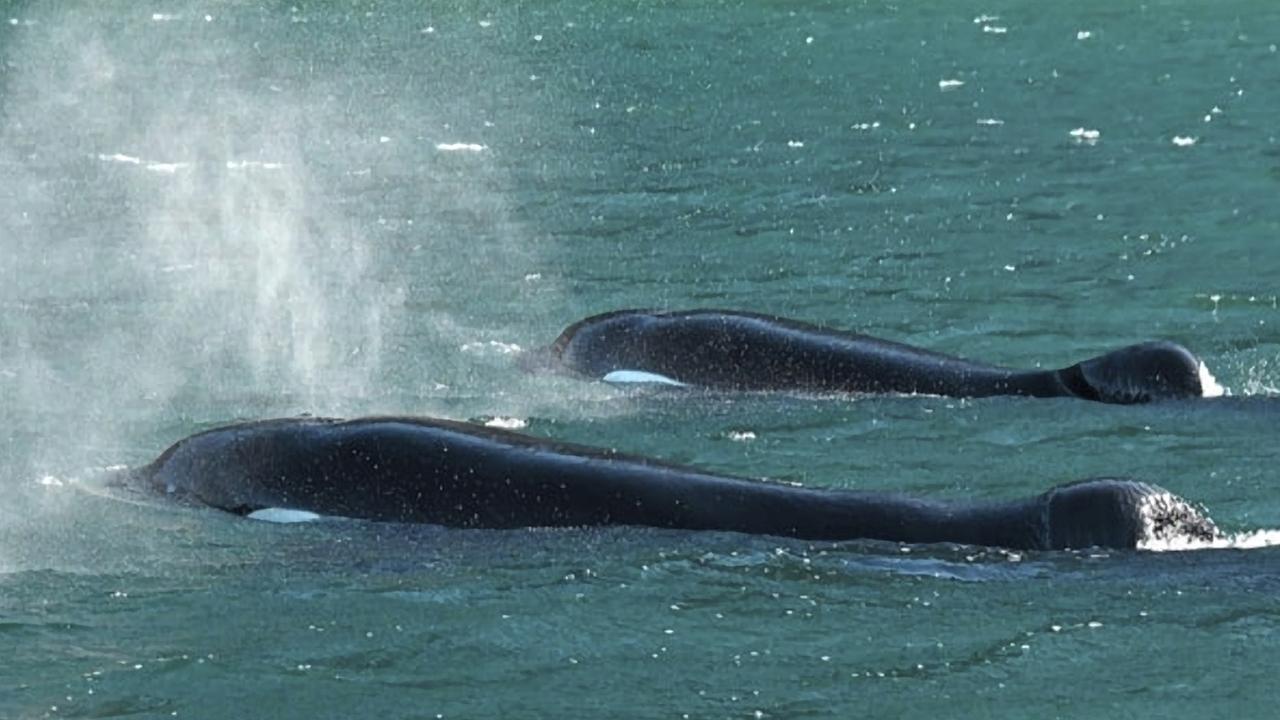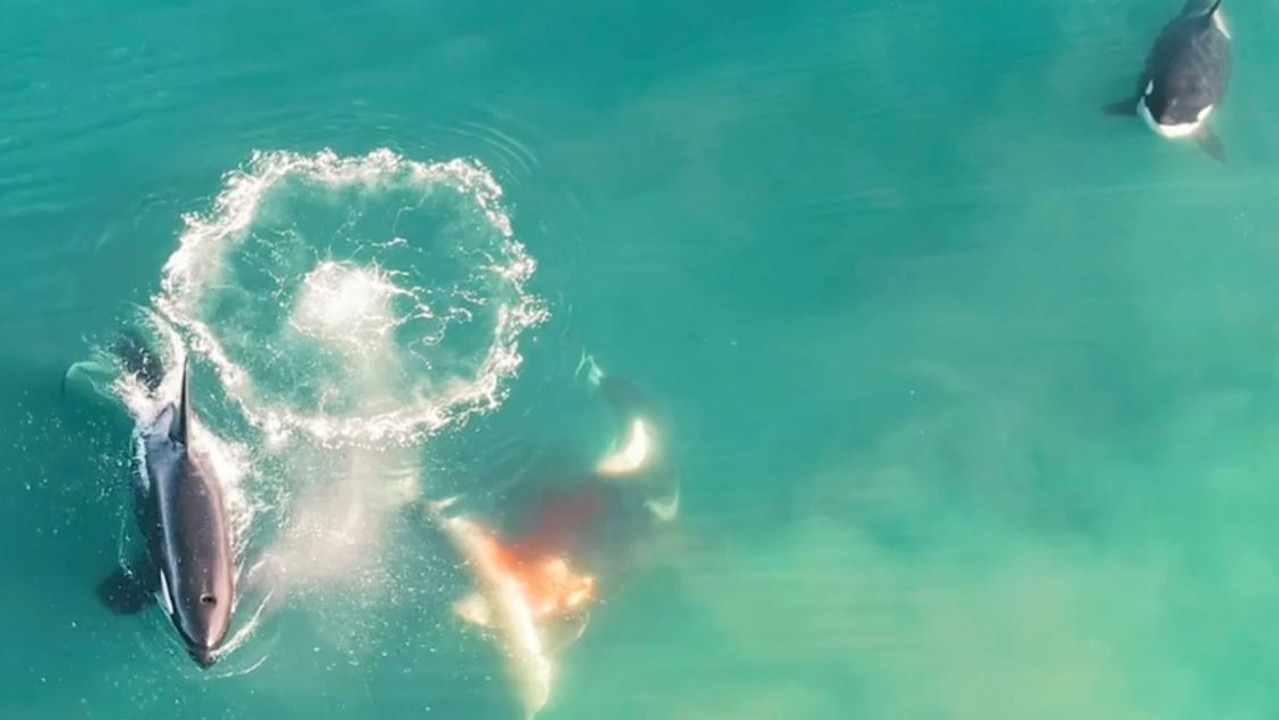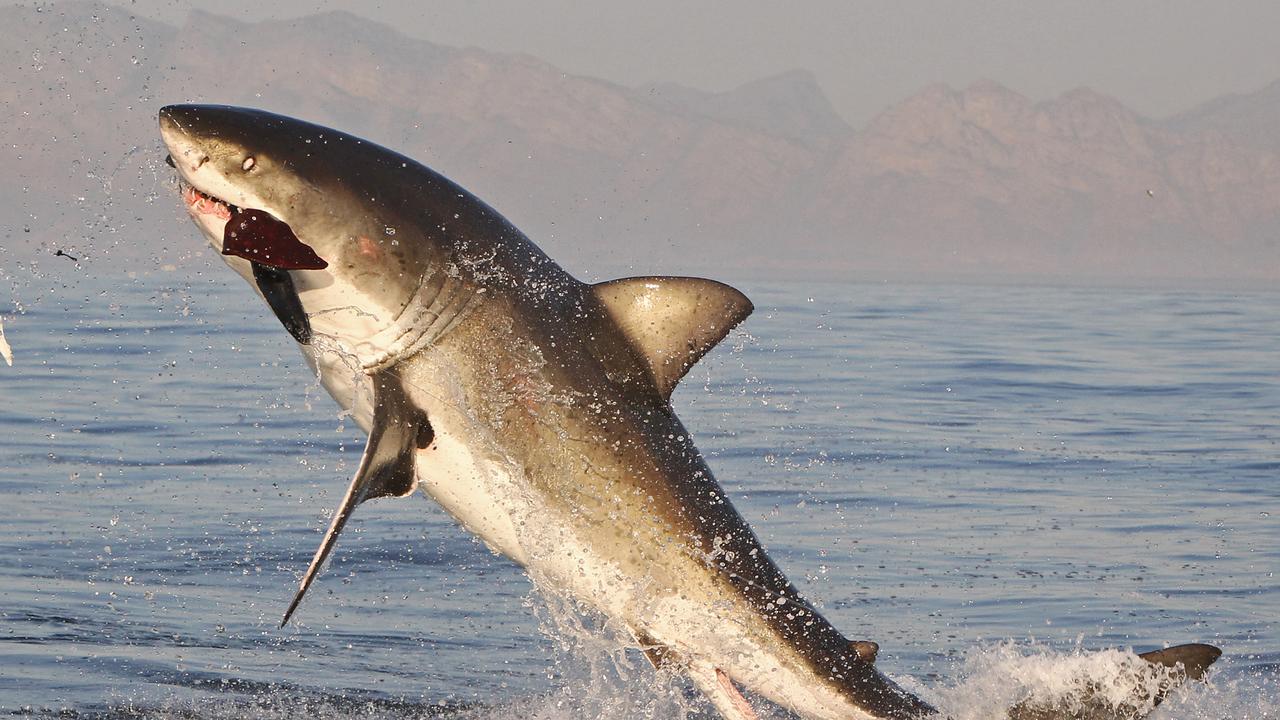Orca duo Port and Starboard kill 17 sharks in one day
A notorious pair of orcas killed 17 sharks in one day and ate only their livers during their deadliest hunt yet off the coast of South Africa

READING LEVEL: RED
A notorious* pair of orcas killed 17 sharks in one day and ate only their livers during their deadliest hunt yet off the coast of South Africa.
The killing efficiency* of the adult males, known as Port and Starboard, has overturned the marine* hierarchy* in their hunting grounds.
Since their arrival in False Bay, in the Western Cape province, in 2015 the world’s most famous great white sharks have often washed up on Cape beaches.
Sevengill sharks, which were killed in the most recent attack, have moved up the food chain in the absence of the great whites and become easier pickings for the orcas, also known as killer whales.
Sevengills are named after their number of gill slits – great whites and most other sharks have five.

Port and Starboard are easily identified by their distinct collapsed fins. Researchers from the Marine Dynamics Academy, who regularly observe them, said last week’s hunt off Pearly Beach, 185km along the coast from Cape Town, was their most deadly.
Killer whales typically work in pairs or groups to grip their prey’s pectoral fins* in their jaws before flipping the shark and ripping it open.

There were 17 sevengill shark carcasses*, all females, found with a clean tear between their pectoral fins and their livers absent but all other organs intact.
A shark liver is rich in oils and high in calories and accounts for 25 per cent of its body weight, which can be two tonnes.
The discovery of more carcasses was likely, researchers said.
The “flying” great whites of False Bay are infamous* for breaching* and stunning their seal prey before killing them.

In addition to the negative impact of dwindling* great whites on the tourism industry, there is concern about the impact that the killer whales might have on the environment.
“Great whites and sevengills are the most important top predators in their ecosystems, with a key role in keeping their environments clean and diverse,” said Alison Kock, a marine biologist who has been studying Port and Starboard for years.
“The abrupt loss of such a large number of sharks will inevitably change how the food web works and the behaviour of the hunted sharks, whose numbers are already low.”
This story was originally published in The Times and is reproduced here with permission.
GLOSSARY
- notorious: generally known and talked of in an unfavourable way
- efficiency: the act of achieving maximum productivity with minimum wasted effort or expense
- marine: relating to the sea or found in the sea
- hierarchy: a system in which members of an organisation are ranked according to status or authority
- pectoral fins: the fins situated on either side just behind a fish’s head, helping to control the direction of movement
- carcasses: the dead body of an animal
- infamous: famous or well known, typically for some bad quality or deed
- breaching: rise and break through the surface of the water
- dwindling: gradually diminishing in size, amount, or strength
EXTRA READING
Sharks smash scuba diving depths
Dolphins dance through glowing algal bloom
Ancient four-legged whale walked on land
QUICK QUIZ
- What is the name of the orcas that went on a killing spree?
- How has the marine hierarchy been overturned?
- What is another name for orcas?
- Why are the orcas feasting on shark liver?
- How are the great white sharks “stunning” their prey before killing them?
LISTEN TO THIS STORY
CLASSROOM ACTIVITIES
1. Ask the questions
Imagine that you are a reporter for Kids News. Write at least three questions that you would ask marine biologist Alison Kock to help find out more information about the killer whales. Use your research skills for information to write the answers that you think that she would give you.
Time: allow 60 minutes to complete this activity
Curriculum Links: English, Science
2. Extension
What is the food web and why is it so important? Use information in the story to write a brainstorm, mind map or list of ideas to answer this question.
Time: allow 20 minutes to complete this activity
Curriculum Links: English, Science, Geography
VCOP ACTIVITY
Opener up-level it
Make a list of all the openers in the article. Pick three that repeat and see if you can replace them with another word, or shuffle the order of the sentence to bring a new opener to the front.
Don’t forget to re-read the sentence to make sure it still makes sense, and that it actually sounds better.

